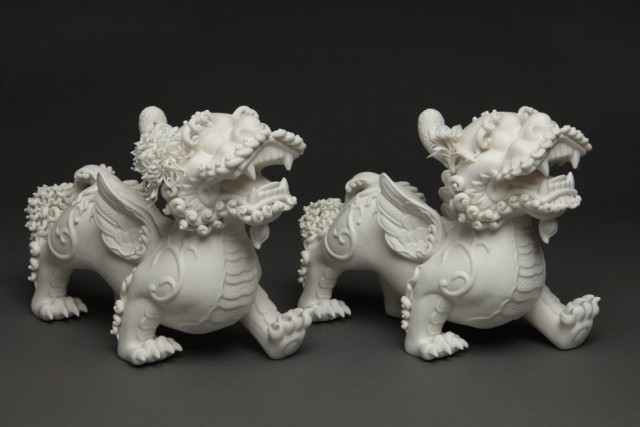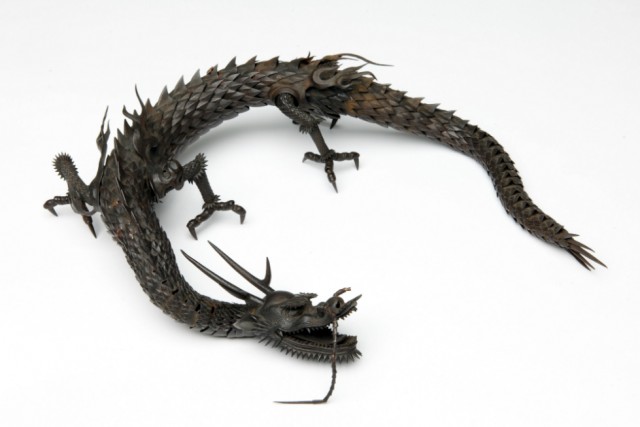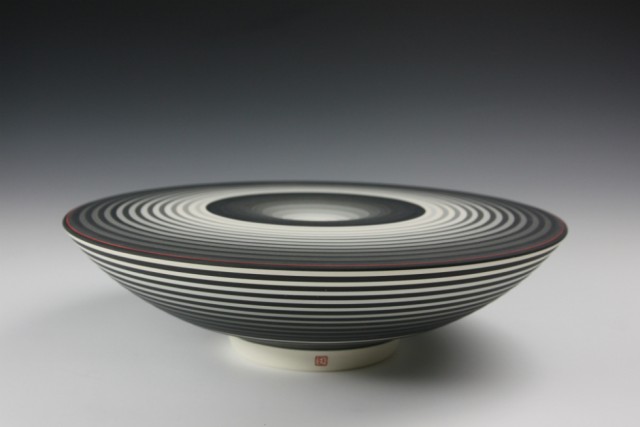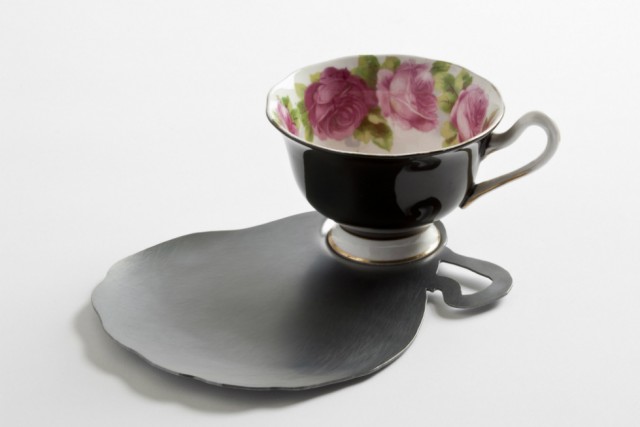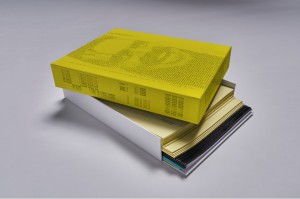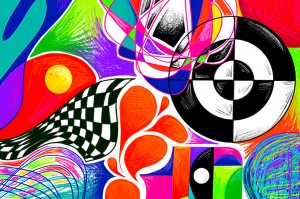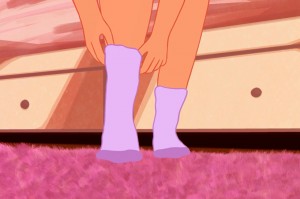An Exhibition Of Illusion And Obsession: Eastern Exchanges
Linda Pittwood finds a myriad of cultural obsessions from a huge geographical area at Manchester Art Gallery’s latest craft and design show…
On the horizontal axis: East and West. On the vertical: an arrow pointing down, or backwards, to the past and upwards to the future. This simple map I offer is one possible way to understand Eastern Exchanges: Manchester Art Gallery’s current exhibition of craft and design.
Other navigational markers are more hazy, as director Maria Balshaw suggests when she explains that the objects in the exhibition are neither neatly Fine art or Decorative art: “There is movement between these categories… [yet] they don’t really work… they may exist in the minds of academics, makers and audiences [but in fact] they are not stable.”
Manchester itself is the only other fixed point in an exhibition of shadows, illusion, reciprocity and transposition.
Pleasingly, the starting point for Eastern Exchanges was a desire to exhibit certain items from the gallery’s collection that had not been on display for many years, or ever. This included historic objects, such as a 19th-century Japanese norimono, or sedan chair; lacquered wooden boxes; miniature sculptures called netsuke; an (unintentionally comedic moustachioed) suit of armour; and a selection of contemporary pieces, including two steel sculptures — evocative of large pine cones and begging to be held in two cupped hands. The latter were made by Japanese metalworker Junko Mori when she was resident in Salford: further revealing the gallery’s local and global connections.
Curator Janet Boston has worked hard to develop a meaningful narrative in which to place objects that have migrated to Manchester from a huge geographical area and via a number of routes, including Victorian philanthropy, contemporary commissions and loans specially selected for the exhibition. Of the Victorians who donated their objects to Manchester, Boston says they bought the “right things […] they had good taste, and bought from the premier dealers.” However, historical circumstances skewed the perspective and historical collections have holes.
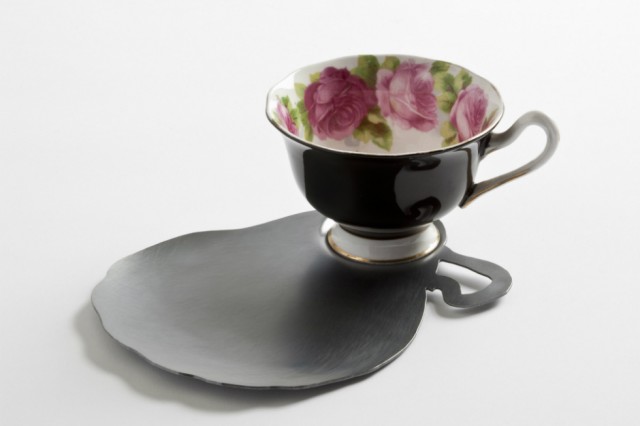
One of the particular absences that Boston identified in the historic holdings of East Asian Fine and Decorative art, not just in Manchester but the whole of the UK, was the lack of Korean objects. The country was ‘closed’ until the late 1800s, when Japan insisted Korea open up and trade with the rest of the world. This omission doesn’t reflect how enmeshed Korean craft and design is with China and Japan when it comes to influences, techniques and styles; borrowing and appropriating Buddhism, Confucianism, laquerwork and ceramic production through war and peace times. Deliberately, Boston has managed to augment each of the three strands of the exhibition (‘Distinctively Eastern,’ ‘East Meets West’ and ‘Future East’) with Korean objects.
Wandering through Eastern Exchanges, I consider a common perception: that of an intrigue and obsession travelling predominantly from West towards East. In fact, the second section of the show indicates more of a two-way traffic of influence, education, migration and commerce. George Nakashima’s Winsor-style lounge chair appears to be a blend of arts and crafts, Scandinavian mid-century modernism and an East Asian aesthetic, produced in the US in 1956. Likewise, Shoji Hamada’s handmade stoneware bottle wouldn’t look out of the place in Manchester Art Gallery’s concurrent exhibition of 20th century European and American industrial design items, House Proud, or amiss in my own 21st century home.
The ‘East meets West’ room also focuses on two of the most impactful East Asian exports: tea and porcelain, both of which now so at home in the UK they feel indigenous. Boston gleefully describes how consumers in Britain first confronted with porcelain thought it was glass – so dissimilar it was to the stoneware ceramics produced here in the 17th century. Eastern and Western makers continue to investigate the ritual, product and concept of tea, as well as pushing the boundaries of what porcelain is capable of. Tee Trinken by Lei Xue is a cute contemporary combination of both: two apparently crushed soft drink cans made in fine ceramic, decorated with Chinese blue and white work – a nod to the German predilection for canned ice tea and to one of the big themes in East Asian art and design, environmentalism.
The opening up of Western-Eastern trade links in the 1700s led to (sometimes) clumsy attempts to copy the distinctive look of Asian products, the phenomenon known as Chinoiserie. Alongside an 18th-century skirt from the Whitworth Art Gallery collection — hand-painted to evoke East Asian porcelain designs — is the piece Chinese Ladders by Felicity Aylieff (2007): a contemporary channelling of East Asian production and style. The two enormous ceramic sections placed one on top of the other form a piece that was most tricky to install in the show. It was produced with the help of the Jingdezhen Experimental Porcelain Factory, utilising their unique facilities and capabilities to make ceramics on this scale.
As the exhibition segues into the present and hints to the future, we are introduced to one of the most recent acquisitions at Manchester Art Gallery: Professor Fumio Enomoto’s Weave Stool, commissioned directly from the maker after his product won the Bronze Leaf award in the International Future Competition in 2011. It demonstrates that strength and visual pleasure can be held within the most minimal structures.
The final section, ‘Future East,’ showcases the beneficiaries of a cultural legacy of using craft as a way to embody, and later export, ritual and worldview. These practitioners combine this legacy with a lightness of touch and experimental approach to their materials, and an interest in illusion and placement within the environment. Koichiro Yamamoto’s jug, for example, appears functional but holds its handle within its solid glass form. Jung Hong Park reinvents blue and white porcelain in delicate layers, and Yasuko Sakurai’s ceramics filter a constellation of shadows under the spotlight.
Western and Eastern societies, having their origins in Ancient Greece and Ancient China respectively, arguably bear differences to this day. In Eastern Exchanges, we might see the Western obsession with looking at discrete objects in their presentation here within museum showcases, and the Western inclination to categorise in making a distinction between Fine and Decorative arts. But the exhibition combines this with what could be seen as an Ancient Chinese understanding of the world as made up of interacting substances, encouraging us to see an object as part of its environment and context. The ‘exchange’ in the title could refer not just to physically trading objects or visiting places – but swapping ideas and changing the way we look at the world.
Linda Pittwood
See Eastern Exchanges: East Asian Craft and Design until Sunday 31 May 2015 at Manchester Art Gallery – FREE

